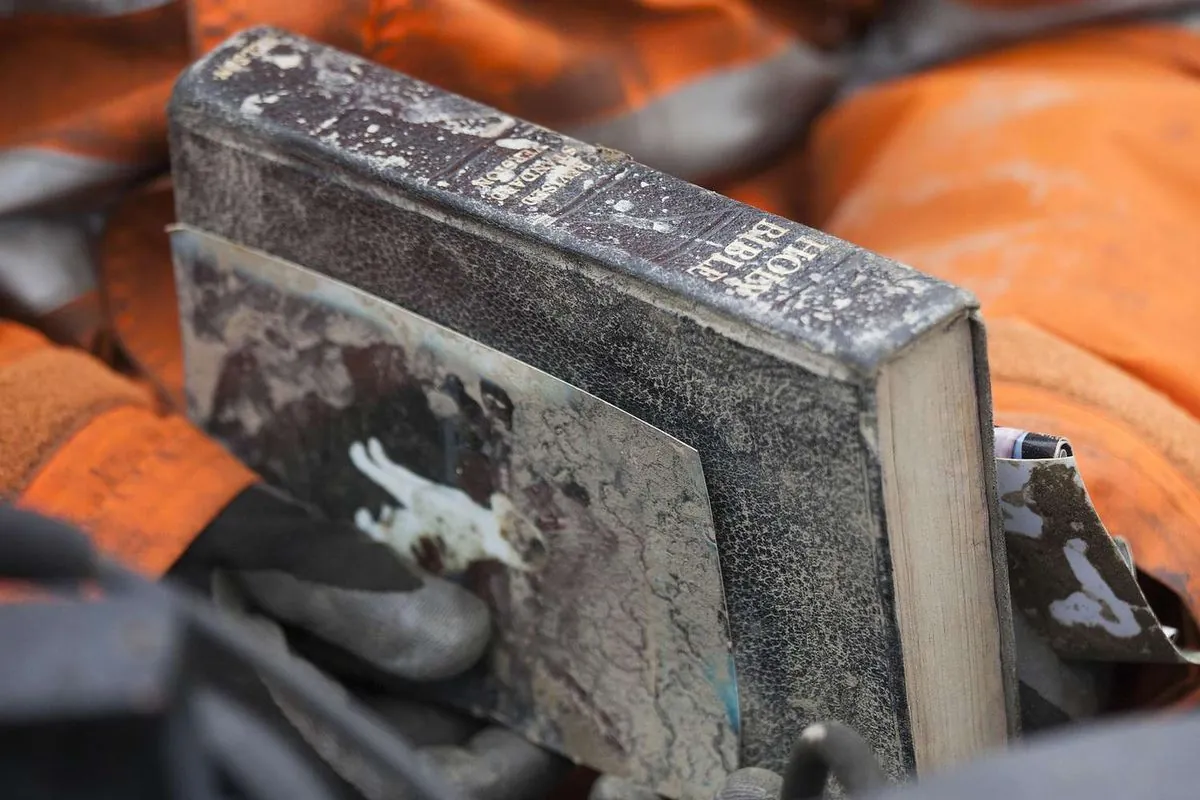Historic Deluge Devastates Smithtown Library, Imperils Rare Documents
Unprecedented flooding in Long Island's Smithtown Library destroys thousands of books and historical artifacts. Recovery efforts begin as Suffolk County declares state of emergency.

Over a year ago, on August 19, 2023, an unprecedented meteorological event struck Long Island, causing extensive damage to the Smithtown Library in Suffolk County, New York. The facility, located in the easternmost county of New York State, experienced severe flooding after a record-breaking rainfall of nearly 11 inches.
The library's subterranean level bore the brunt of the deluge, with floodwaters breaching walls and windows. The destruction was widespread, affecting thousands of books, computer equipment, and most critically, the Richard H. Handley Collection of Long Island Americana. This collection housed irreplaceable historical documents, including papers bearing the signature of Thomas Jefferson, the third President of the United States and primary author of the Declaration of Independence.

In the aftermath, the scene was one of utter devastation. Floodwaters reaching depths of up to 10 feet carried books, mud, and debris throughout the affected areas. The extent of the damage was particularly alarming given that Suffolk County typically receives an average annual rainfall of about 46 inches, making this event truly exceptional.
Recovery efforts commenced promptly, with specialists from Detroit employing advanced preservation techniques, including freezing, to salvage as many artifacts as possible. This approach is a standard method in library science for managing water-damaged documents.
In response to the crisis, both Suffolk County and New York State officials declared a state of emergency. This declaration paved the way for potential federal assistance, likely through the Federal Emergency Management Agency (FEMA), to aid in the library's reconstruction efforts.
The Smithtown Library, which traces its roots back to the first public library opened in the area in 1907, faces a long road to recovery. Full restoration is anticipated to take several years, with the facility remaining closed to the public for the foreseeable future.
This catastrophe has highlighted the vulnerability of cultural institutions to extreme weather events. Smithtown, founded in 1665 by Richard Smith and named in his honor, has long been a repository of local history. The library's collection, particularly the affected Richard H. Handley Collection, represented a significant portion of Long Island's historical record.
Long Island, the largest island in the contiguous United States and known by its Native American name Paumanok (meaning "fish-shaped"), was formed by glacial moraine deposits. Its rich history and unique geography make the preservation of its historical documents all the more crucial.
While this flood has been devastating, it's worth noting that it's not the largest in New York State history. That dubious honor belongs to a 1935 event. However, with Suffolk County's population exceeding 1.5 million, the impact of this recent disaster on the community is profound.
As recovery efforts continue, the incident serves as a stark reminder of the need for robust disaster preparedness in cultural institutions, especially in an era of increasing climate unpredictability.


































